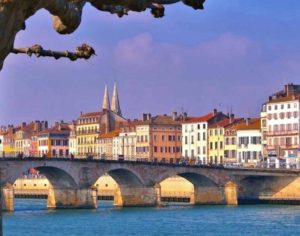TOWNS OF CHARM AND CHARACTER IN BURGUNDY
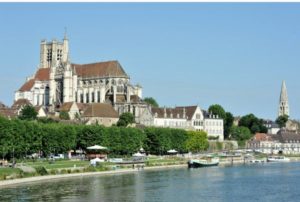
The historic Burgundy district is blessed with some of the most beautiful rural landscapes in France. There are world-renowned vineyards to visit and charming small cities, but the region also has a wealth of picturesque towns and villages rich in historical and gastronomic heritage that are a joy to discover. It’s worth striking further afield from its beautiful regional capital, Dijon, and the wine capital of Beaune to explore some of the other riches of the region.
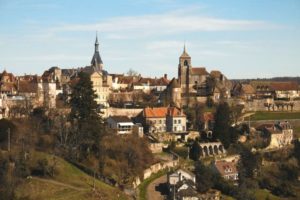
Avallon is a great town to start exploring more of the beautiful Cote d’Or in the department of the Yonne. It’s known for its medieval history and close proximity to the Morvan Regional Natural Park. Small enough to be somewhat off the beaten track, it’s rich in history and architectural treasures with numerous fine historic buildings and quaint cobbled streets. It’s easy to understand why its elevated position, perched on a granite outcrop between two ravines, attracted the Romans.
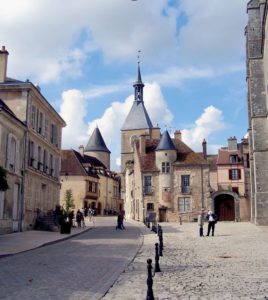
Avallon was a fortified town, and is still surrounded by most of its ancient walls. A stroll in and around the town will reveal towers, gates, walls and bastions, some of which were built and rebuilt between the 12th and 15th centuries. The centre of town is reached through an imposing 15th century gateway-clock tower.
In the main square is the 12th century Collegial Church of Saint-Lazare, regarded as one of the finest examples of Romanesque architecture in Burgundy.
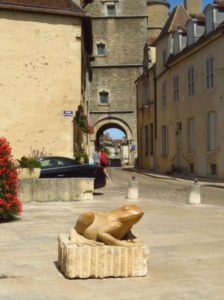
Head straight for the Tourist Office beside the clock tower where you can obtain a free self-guided walking trail, called the Circuit de la Grenouille (Frog Circuit), that takes in the historical centre and main sights, ensuring you don’t miss anything of interest. You can also buy a €2 booklet at the Tourist Office which contains a map and information about each of the 26 stops of the Circuit.
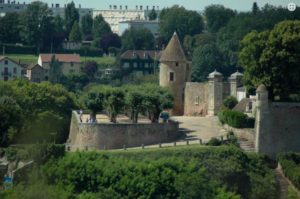
There are a number of lovely vantage points around the town that offer stunning views over the Cousin Valley. The Promenade de Capucins is a plane-tree lined walkway towards the north of the town, another is the Terreaux Vauban, a balustraded walkway in the centre of town, and a further walkway, la promenade de la petite porte, is noteworthy for the views it provides over the surrounding Morvan and Burgundian countryside.
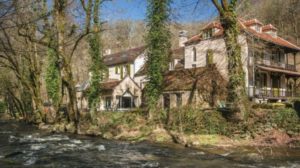
Also, don’t miss the terraced gardens below the fortifications that slope down towards the Cousin River. This verdant valley shouldn’t be missed. Popular with trout fishermen, it has several hotels along it, such as the Moulin des Ruats, built in the 18th century as a flour mill, which would make a great location for a short sojourn.
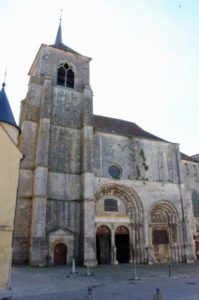
Avallon really comes alive on Saturday mornings when the market sets up in Place Géneral de Gaulle. Morvan honey, cheeses such as the creamy raw cows’ and goats’ milk cheeses made by the monks at the nearby Abbaye de la Pierrre-qui-Vire, and wine from the Auxois are specialities to look out for.
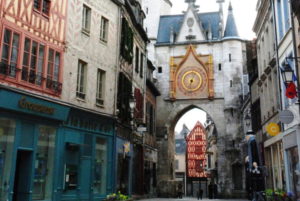
An ancient city that once stood on an important Roman road, Auxerre is the capital of the Yonne département and regarded as the gateway to Burgundy. Officially designated a Ville d’Art et d’Histoire, Auxerre dates back to Gallo-Roman times. Archaeological excavations have unearthed artefacts, one of which being a bas-relief depicting a bunch of grapes, dating from the 2nd century AD.
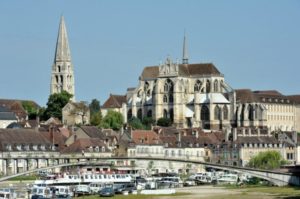
Auxerre has always been a prosperous town. Centuries before barges and motorised transport, huge rafts made of giant logs cut from the Morvan forest were floated down the river Yonne headed for the quays of Auxerre, where stone and wine would be loaded on top of the rafts for their onward journey to Paris. The road across the river is a section of the Via Agrippa, part of the ancient road system that lead (inevitably) back to Rome.
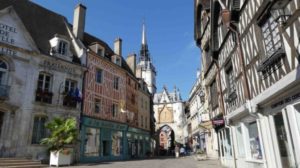
Old Auxerre is a pleasure to explore on foot, since the centre is a designated protected zone, and most of the streets are pedestrianised. There are narrow, winding streets, half-timbered medieval houses and a number of beautiful churches, two of which dominate the town.
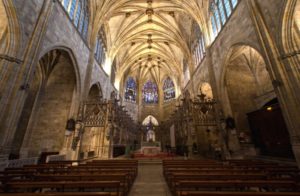
The Abbaye Saint-Germain, a former Benedictine Abbey, was constructed in the 13th century, although its crypt dates from the Carolingian era and is regarded as a wonder of the early Middle Ages. It’s a multi-layered archaeological site, with frescoes dating between 841 and 857, making them the oldest in France.
The Cathédrale Saint Etienne, built on the foundations of several Gallo-Roman buildings, dates from 1215, which rivals any in northern France for the splendour of its portal sculptures and stained glass windows. The crypt is Romanesque, from the early 1000s, and decorated with astounding frescos.
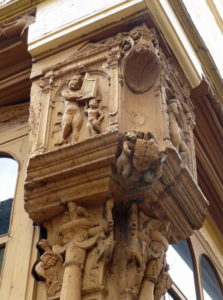
The Tourist Office can provide you with an itinerary of all the most important sights, but a good place to start is the pedestrian bridge crossing the river Yonne, which offers keen photographers a delightful perspective of Auxerre and the towers of its cathedral and churches rising above the skyline. One of the loveliest streets is the somewhat hilly rue Fécauderie, where you should look out for the carved timber detailing on the houses at the junction with rue Joubert.
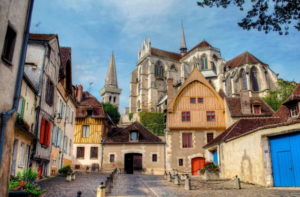
One of the most interesting quarters is the neighbourhood of La Marine, a few streets from the town’s main core. Living and working here were the families that relied on the Yonne such as boatmen, water carriers, tanners, or merchants. The names of the streets and squares, like Place Saint-Nicolas, the patron saint of sailors and merchants, are redolent of the activities that filled this neighbourhood for centuries. Auxerre was involved in river trade from the 1st century, but the traffic increased considerably during the Middle Ages when large numbers of pilgrims came to worship the relics of Bishop Saint Germain.
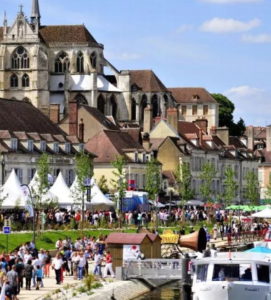
The month of May is a great time to visit Auxerre when every two years there is an important wine and local produce festival, called ‘Fleurs de Vigne’, held over a weekend. There are all kinds of wine tastings and opportunities to chat with enthusiastic producers of the Chablis and Grand Auxerrois wines, and plenty of samples of Burgundy’s gastronomic delights to savour. The event is crowned by the parade of the region’s 100 Burgundian brotherhoods and their traditional coronations.
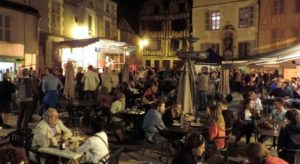
During summer evenings, the pavement cafes resound to a range of musical styles, all part of the Garçon, la note! festival.
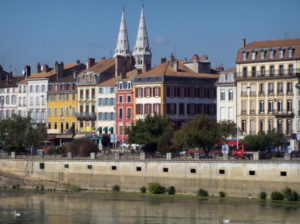
Often missed by the visitor, Mâcon has a lot to offer. At the southern-most end of the Burgundy, it’s only about 70km north of Lyon. This more southerly location gives the climate a slight Mediterranean feel to it, and has quite a southern character, with its colourful facades and roofs of round Romanesque tiles.
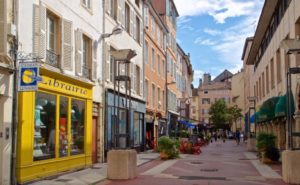
A pleasant stroll through the city centre will reveal its heritage and history. Founded in the 2nd century BC, its original name was Matisco. Situated at a cross-roads of river and road, Mâcon became a centre of communications between 843 and 1600, as it bordered the French Kingdom and the Holy Roman Empire. It later became the administrative centre of Saône-et-Loire. It was a very active centre of the Resistance during World War II, and was the first town of unoccupied France between Paris and Lyon.
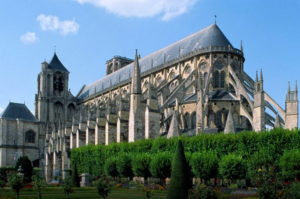
There are a number of religious buildings of note, particularly the remains of the old Romanesque cathedral where you can still see the entrance porticoes and towers. Next to it is the present Cathedral of Saint Vincent built in the Classical style under Napoleon. There’s a 17th century Ursuline convent which later became a prison. It now houses the local history and archaeological museum and has a floor dedicated to Lamartine, the famous poet and politician, born in Mâcon in 1790. Opposite the Hotel de Ville is the striking Eglise St. Pierre, built in the Neo-Romanesque style.
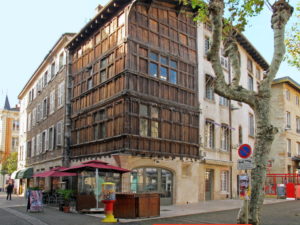
The 18th century Hotel-Dieu hospice was originally an apothecary, and there is a collection of pharmaceutical equipment and ornaments on display. Also take in the charming Place aux Herbes, and particularly La Maison de Bois, now a well-known bar and restaurant. Also, don’t miss the once-fortified bridge of Saint-Laurent, dating from the 13th century—the bridge was widened in the 18th century when the fortifications were removed.
Mâcon has a terrific Saturday market set up just by the St-Laurent bridge that crosses the river Saône, where you can explore the rich gourmet heritage of the region.

It’s a city with a rich cultural life. From end of June to end of August, Mâcon hosts the Été Frappe festival of music, ranging through classical, jazz and rock, offering free concerts in various locations throughout the city, plus dance shows, theatre performances and outdoor movies. At the end of July, the Crescent Jazz Festival hosts internationally renowned artists for a week. In November in the city and its surroundings, there’s the festival of Les Vendanges de l’Humour (the Harvest of Humour), which is basically a comedy festival.
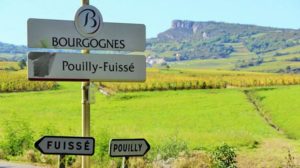
To the west of Mâcon, an enchanting journey along the Route des Vins du Mâconnais-Beaujolais passes through 78 communes between Saint-Gengoux-le-National and Romanèche-Thorins. The Route wanders gently along a series of broad valleys flanked by rolling hills, vine-covered slopes and fields grazed by the highly prized Charolais cattle. In this part of the Burgundy, agriculture sits happily alongside viticulture.
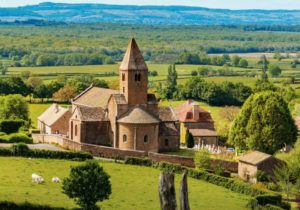
Little stone villages, nestled in the folds of gentle hills, have suitable names such as Chardonnay and La Roche Vineuse, and many have fine Romanesque churches. You will also have some fabulous views over the Saone Valley. The route here is marked by signs reading “Suivez la Grappe” (follow the grape), which lead to estates that produce a wide variety of appellations. In the north of the Maconnais, the winegrowers will invite you taste Gamay-based reds, rosés, or local Chardonnay whites. Further south, you’ll find the great white wines of Pouilly-Fuissé, Pouilly-Loché, Pouilly-Vinzelles and Saint-Véran. At this point the Mâconnais ends and the Beaujolais wine-growing area begins.

Overlooking the vines of Pouilly-Fuissé is an imposing rocky spur, rising 493 metres, called the Roche de Solutré, a site that will take your breath away. The Roche has been known since prehistoric times and as a hunting destination, and more recently, became very well-known during the presidency of Francois Mitterrand (1981-1995), who hiked up it every year.
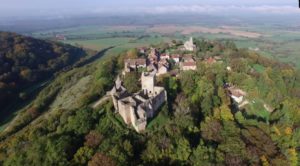
During your stay in this part of the Burgundy, you can explore 500kms of tourist trails, divided into eight itineraries. These charming little roads will take you back in time, to discover the region’s historic heritage, through stone villages, their Romanesque churches, the stunning chateaux of Cormatin and Brancion, as well as the mysterious prehistoric caves of Azé and Blanot.
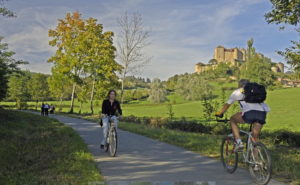
The Mâcon Tourist Office can provide information on the Voie Verte (Green Path), a well-signposted pathway which allows you to discover the southern region by walking, cycling or riding. It covers over 21kms through the beautiful valleys immortalised by Lamartine, the limestone escarpment of La Roche de Solutré and Vergisson, a number of highlights such as the medieval Château de Pierreclos (now an upmarket hotel) where you can visit its chapel, armory, kitchen, bakery, towers and cellars before adjourning to the shop to taste some of the chateau’s wines. The Route takes in a variety of charming villages and of course, a number of the Mâconnais vineyards—the perfect way to soak up the beauty and variety of South Burgundy’s landscapes.
